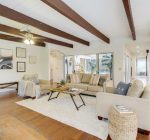Backlight LED Panels: Unleash Radiance and Brilliance
- 77 Views
- Blogger
- August 24, 2023
- Uncategorized

Introduction to Backlight LED Panels
As technology continues to advance, the world of lighting has seen remarkable innovations. One such innovation that has gained immense popularity is the backlight LED panel. These panels have revolutionized the way we illuminate our spaces, offering numerous advantages over traditional lighting solutions. In this article, we will delve into the world of backlight LED panels, exploring their benefits, working mechanism, different types, and how to choose the right one for your specific needs. So let’s dive in and shed some light on the incredible world of backlight LED panels.
Advantages of Using Backlight LED Panels
Backlight LED panels offer a multitude of advantages that make them an attractive lighting option for various applications. Firstly, these panels are exceptionally energy-efficient. LED technology is known for its high energy efficiency, consuming significantly less power than traditional lighting sources. This not only helps reduce electricity bills but also has a positive impact on the environment by reducing carbon emissions.
Another notable advantage of backlight LED panels is their long lifespan. These panels can last for thousands of hours, far outlasting traditional lighting options such as fluorescent tubes or incandescent bulbs. This longevity not only saves money on frequent replacements but also reduces waste and the overall carbon footprint.
In addition to their energy efficiency and long lifespan, backlight LED panels also provide excellent light quality. The even distribution of light across the panel ensures uniform illumination, eliminating any flickering or hotspots that may be present in other lighting solutions. This makes backlight LED panels ideal for spaces where uniform lighting is essential, such as offices, hospitals, or retail environments.
How Do Backlight LED Panels Work?
To understand how backlight LED panels work, let’s start with the basic components. These panels consist of a frame, a light guide plate, LED chips, and a diffuser. The frame holds all the components together and provides structural support. The light guide plate, usually made of acrylic or polycarbonate, distributes the light evenly across the panel.
The LED chips, which are the heart of the panel, are strategically placed along the edges of the light guide plate. These chips emit light when an electric current passes through them. The light is then guided through the light guide plate and diffused using a diffuser, which ensures a uniform and glare-free illumination.
One of the key advantages of backlight LED panels is their ability to emit light in a specific direction. Unlike traditional lighting solutions that emit light in all directions, backlight LED panels emit light only where it is needed, minimizing wastage and maximizing efficiency. This directional lighting also allows for better control and customization of lighting levels, making backlight LED panels suitable for various applications.
Different Types of Backlight LED Panels
Backlight LED panels come in different types, each designed for specific purposes and environments. The most common types include edge-lit panels, direct-lit panels, and RGB panels.
1. Edge-Lit Panels: These panels have LED chips placed along the edges of the light guide plate. The light from the LEDs is directed towards the center of the panel, where it is evenly distributed and diffused. Edge-lit panels are known for their slim profile and are commonly used in applications where space is limited, such as residential settings or retail displays.
2. Direct-Lit Panels: Unlike edge-lit panels, direct-lit panels have LED chips distributed across the entire back surface of the panel. This allows for a more uniform distribution of light and higher brightness levels. Direct-lit panels are often used in commercial settings, such as offices or conference rooms, where bright and evenly distributed lighting is required.
3. RGB Panels: RGB panels, as the name suggests, offer the ability to produce a wide range of colors by using red, green, and blue LED chips. These panels are commonly used in applications where color-changing and dynamic lighting effects are desired, such as entertainment venues, hotels, or architectural lighting.
Choosing the Right Backlight LED Panel for Your Needs
When it comes to selecting the right backlight LED panel for your specific needs, there are a few key factors to consider. Firstly, determine the purpose and environment in which the panel will be used. Is it for general lighting in an office? Or for decorative purposes in a retail setting? Understanding the intended use will help determine the required brightness level, color temperature, and customization options.
Next, consider the size and shape of the panel. Backlight LED panels come in various sizes, from small panels suitable for residential use to large panels used in commercial settings. Measure the dimensions of the space where the panel will be installed to ensure a proper fit.
Additionally, pay attention to the panel’s energy efficiency and lifespan. Look for panels with high energy efficiency ratings and long lifespans to ensure cost-effectiveness and minimal maintenance requirements.
Lastly, consider any additional features or customization options that may be desired. Some backlight LED panels offer dimming capabilities, color temperature adjustment, or even wireless control options. Assess your specific needs and preferences to choose a panel that meets all your requirements.
Installing and Maintaining Backlight LED Panels
Installing and maintaining backlight LED panels is relatively straightforward. However, it is essential to follow proper installation guidelines to ensure optimal performance and longevity.
Before installation, ensure that the power supply is switched off to prevent any electrical hazards. Position the panel in the desired location and secure it according to the manufacturer’s instructions. If the panel requires a separate driver or power supply, ensure that it is properly connected.
Once installed, it is crucial to regularly clean the panel to maintain its performance. Dust and dirt can accumulate on the surface, reducing the overall light output and potentially impacting the panel’s lifespan. Use a soft, lint-free cloth or a mild cleaning solution to gently wipe the panel’s surface. Avoid using abrasive materials or harsh chemicals that may damage the panel.
Regularly inspect the panel for any signs of damage or malfunctions. If any issues arise, consult the manufacturer’s instructions or seek professional assistance for repairs or replacements.
Conclusion: The Future of Backlight LED Panels
As we have explored in this article, backlight LED panels offer numerous advantages over traditional lighting solutions. Their energy efficiency, long lifespan, and excellent light quality make them an attractive option for a wide range of applications. With different types available and the ability to choose the right panel for specific needs, backlight LED panels provide versatility and customization options.
As technology continues to advance, we can expect further improvements in backlight LED panels, including increased energy efficiency, enhanced control options, and even more flexibility in design. With their remarkable benefits and endless possibilities, backlight LED panels are undoubtedly the future of lighting.
So, whether you are looking to illuminate your office, enhance the ambiance of your retail space, or create stunning lighting effects in an entertainment venue, consider the incredible potential of backlight LED panels. Embrace the future of lighting and experience the brilliance they bring to your spaces.
CTA: Discover the endless possibilities of backlight LED panels and transform your spaces with brilliant illumination. Contact us today to explore our range of high-quality panels and




